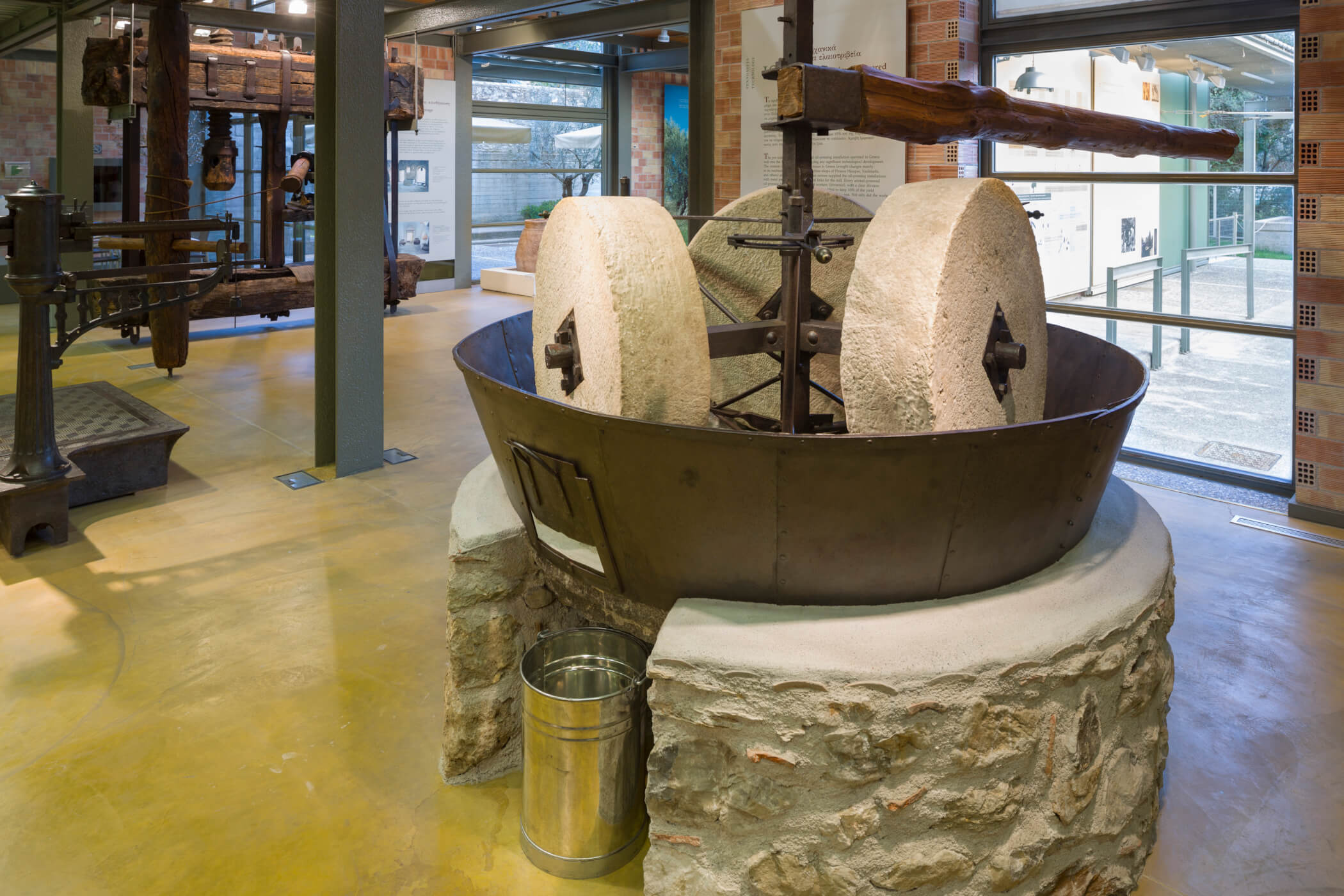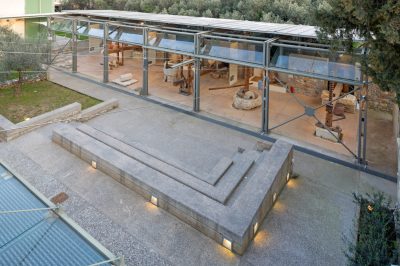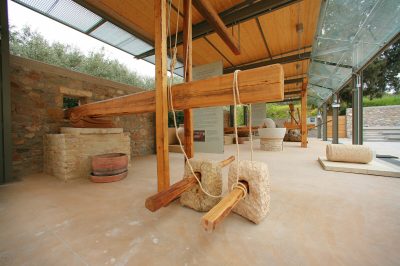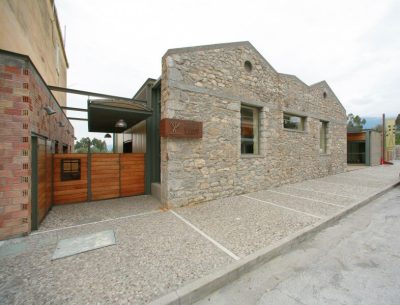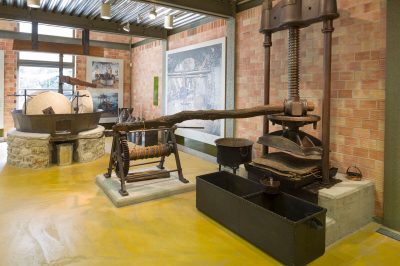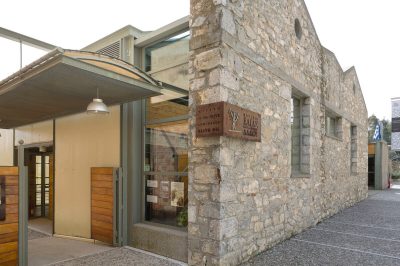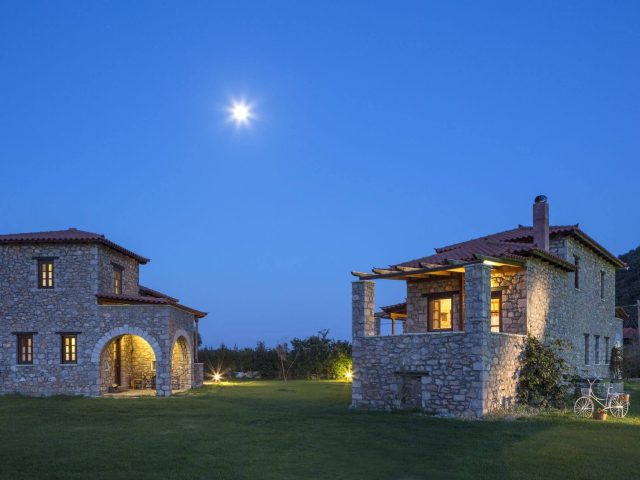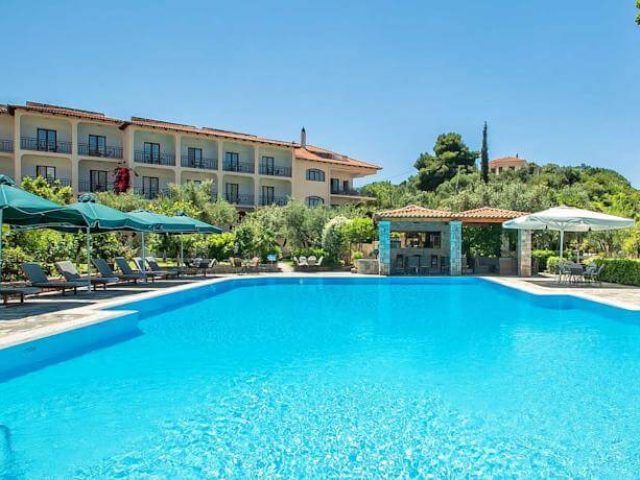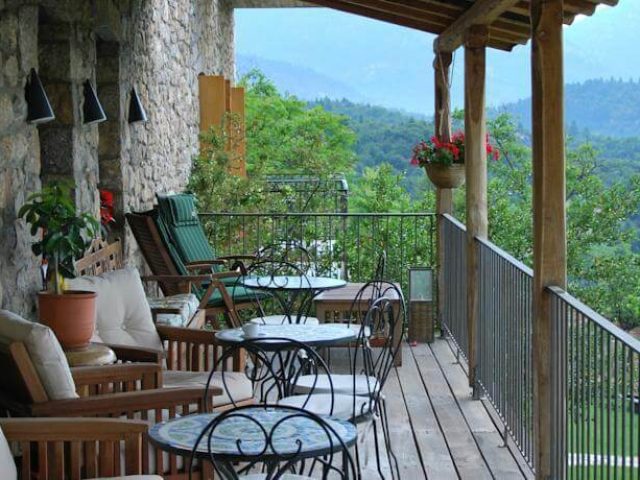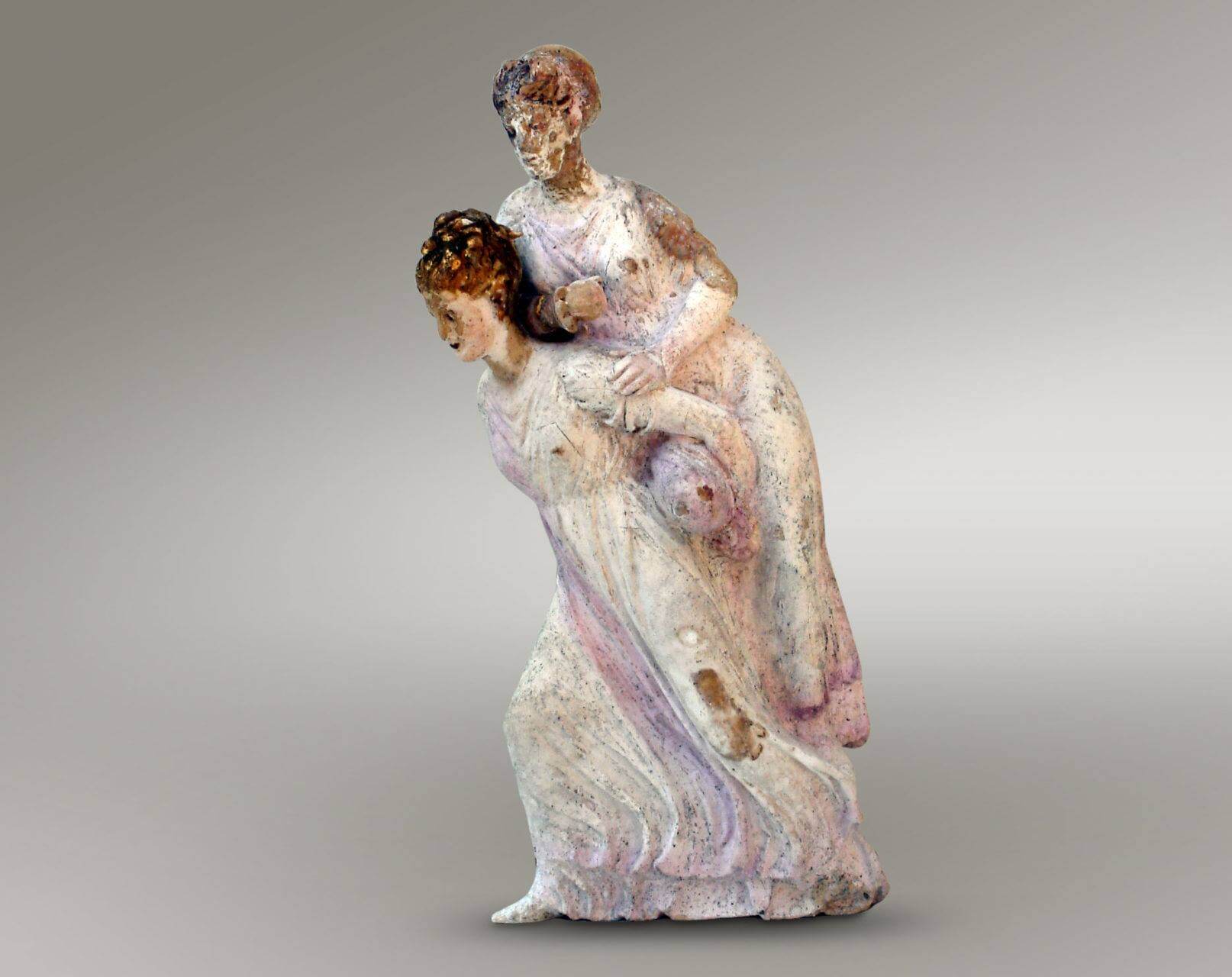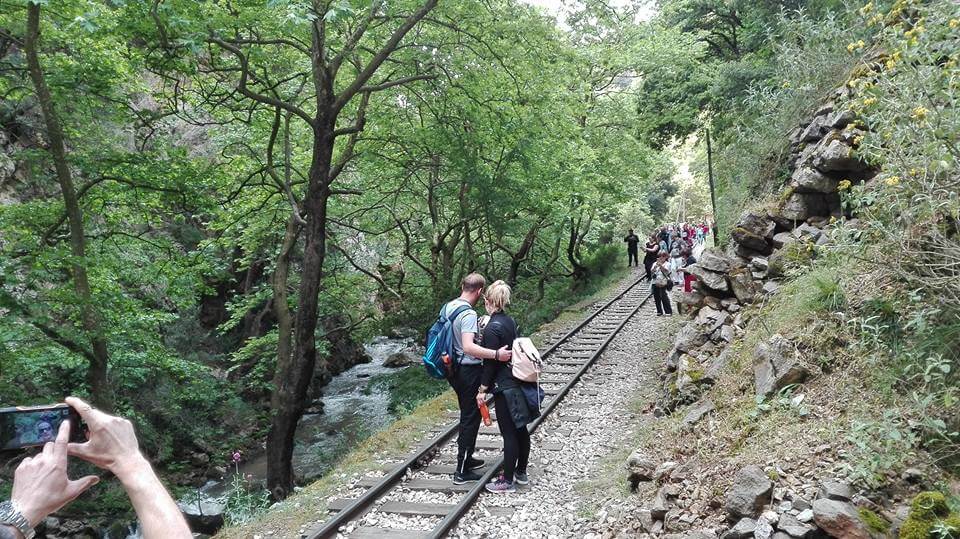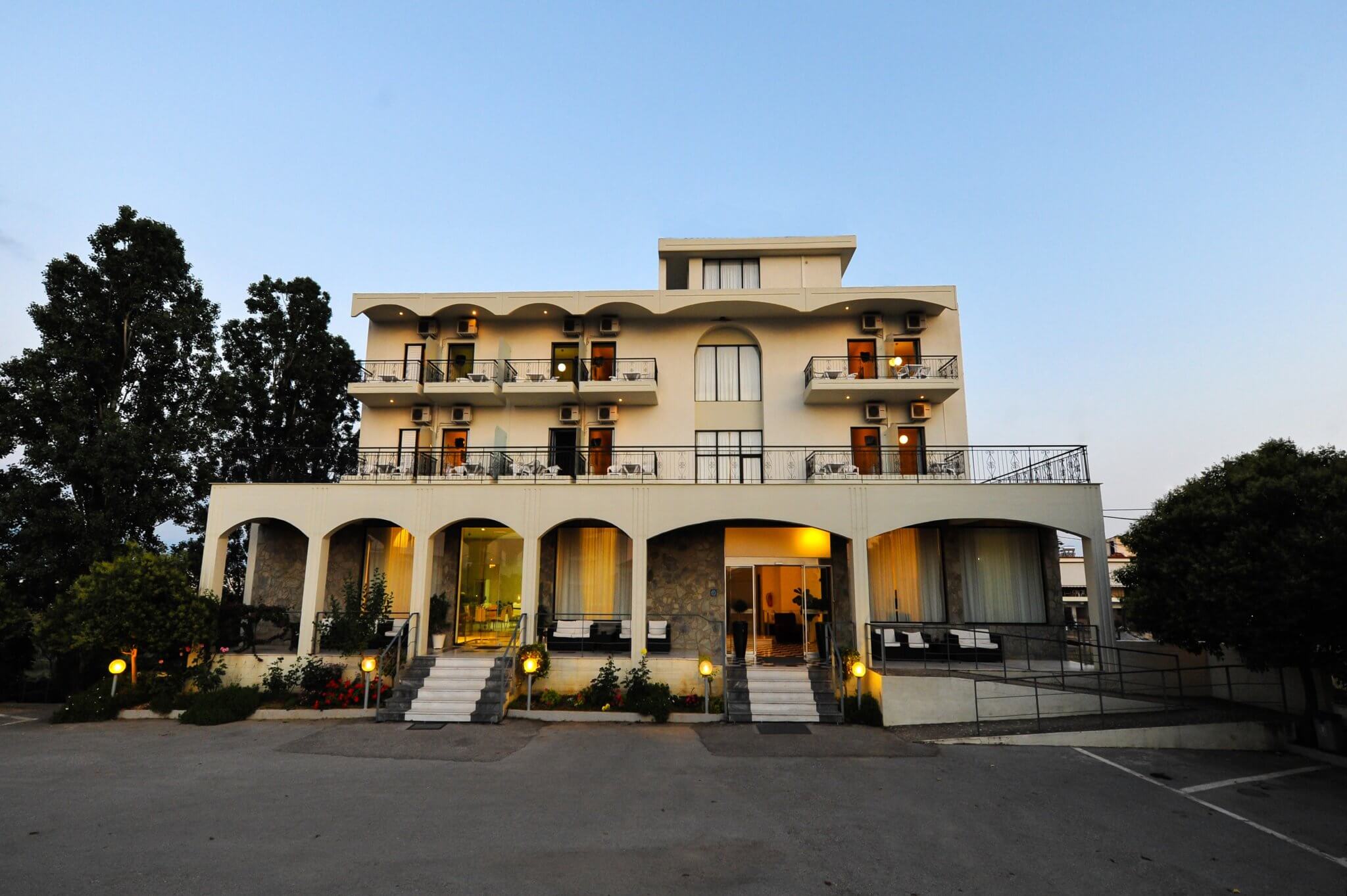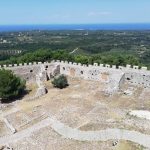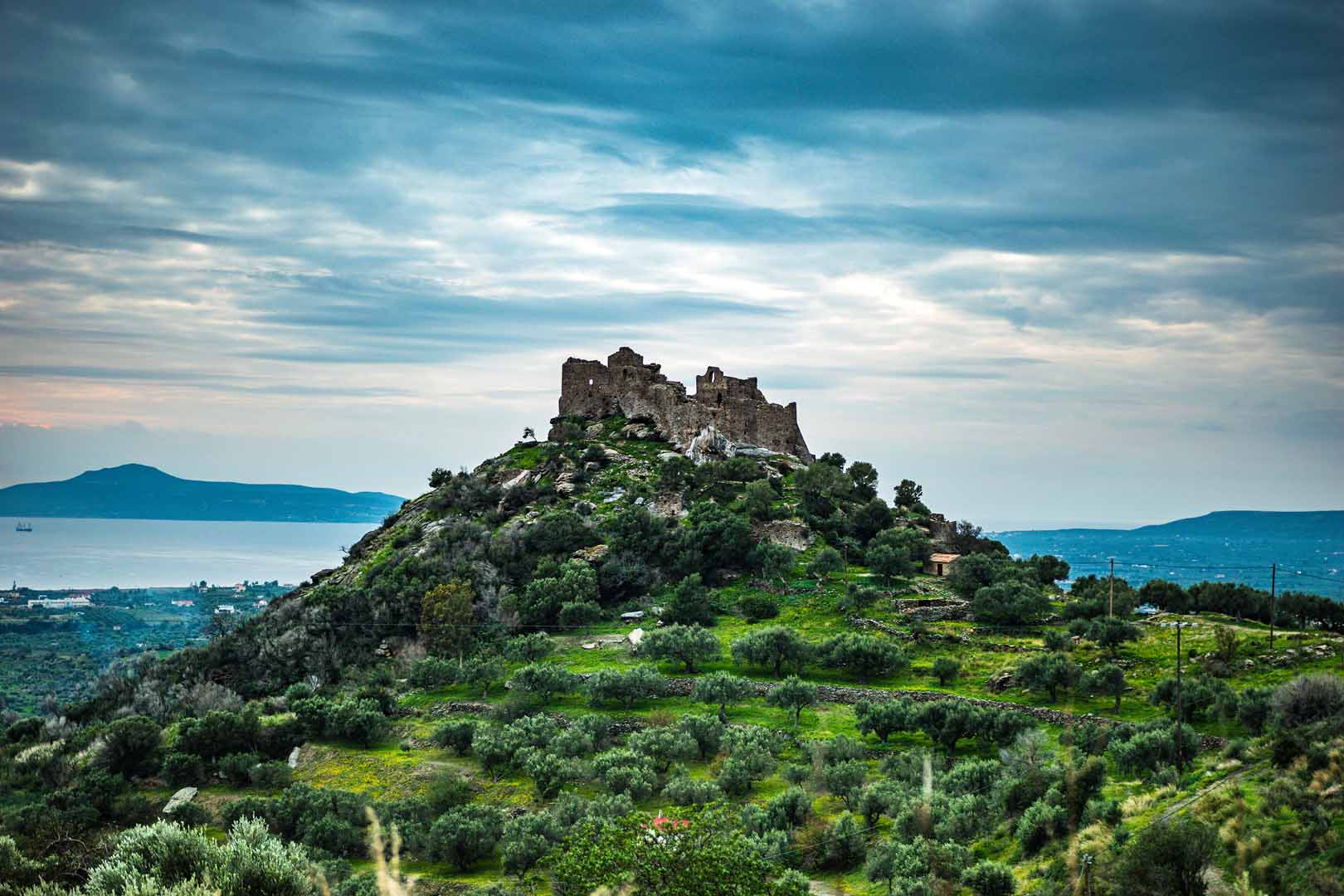Museum of the Olive and Greek Olive Oil in Sparta have the opportunity to see the first evidence for the presence of olives and production of oil in Greece.
Rare fossilized olive leaves, 50,000-60,000 years from Santorini, the oldest findings that demonstrate the presence of the olive tree in Greece.
Signs of the 14th century BC Linear B (Exact copies), with the first written evidence about the olive and olive oil. In each historical period will determine the contribution of olive oil and the economy and in everyday life: food, body care, and forgotten anymore uses, such as lighting.
You will even see how the olive assumes symbolic dimension in mythology, religion, manners and customs of the Greeks.
Samples of ancient and contemporary art show which is the location of the olive tree in art and how it has been, and remains, a continuous source of inspiration for Greek artists.
Downstairs monitor the development of the oil production technology from antiquity to the early industrial era. Here you will see:
Exact replicas of prehistoric, Hellenistic and Byzantine mill, impressive wooden double press with winch from neighboring Xirokampi
,mill from Lefkada, which documents the survival of zookinisis in the 20th century, models representing the operation of motor mills.
Another section is dedicated to soap, household and industrial: the big cauldron that still use the old housewives to make soap in industrial soap.
At the end of your visit to the Museum of the Olive, maps and brochures guide you searchaiologikous oil production sites and visited traditional mills in the Peloponnese and the rest of Greece in order to continue your journey.

